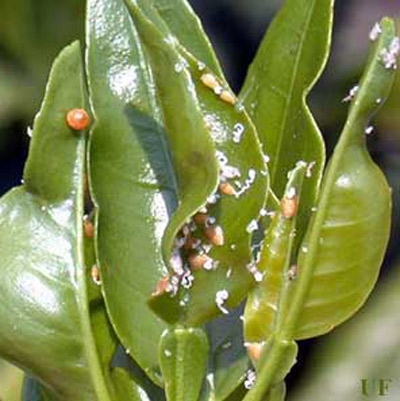
Nian Wang / UF/IFAS Associate Professor of Microbiology and Cell Science
A 9.8.16 UNIVERSITY OF FLORIDA INSTITUTE OF FOOD AND AGRICULTURAL SCIENCES NEWS REPORT ANNOUNCED THAT A RECENT STUDY FOUND THAT WHEN OXYTETRACYCLINE, A BACTERICIDE, IS INJECTED INTO GREENING-CITRUS TREE TRUNKS, IT HELPS KEEP THE TREES ALIVE AND PREVENTS GREENING, ALSO KNOWN AS HUANGLONGBING, OR HLB.
The study was led by Nian Wang, a faculty member at the UF/IFAS Citrus Research and Education Center in Lake Alfred, Florida. Mr. Wang studied Plant Pathology at China Agricultural University, received a M.S (2001) in Plant Pathology from Texas A&M University and a Ph.D from the University of California, Berkley.
Citrus greening first emerged in Florida in 2005, according to previous UF/IFAS studies. According to a 4.19.2016 article in BLOGGYTOWN by Deanna Ferrante, a UF/IFAS study in 2015 said that “80 percent of Florida’s citrus trees are infected with deadly greening disease.” And then a 11.27.15 article in npr’s the salt, said that “some in Florida are questioning how much longer the citrus industry can survive. The future of the state’s $ 10 billion industry could spell the end of an industry that provides some 76,000 jobs in Florida.”
A separate UF/IFAS study sited citrus greening has cost Florida $3.6 billion in economic damage since it was first discovered.
Citrus trees become infected by Asian Citrus Psyllid, an insect that feeds on the leaves and stems of citrus trees.

Asian Citrus Psyllid insects
But Mr. Wang’s UF/IFAS study revealed Oxytetracycline, a bactericide, a substance that kills bacteria, could possibly be a cure for the deadly and costly greening disease. Oxytetracycline is also referred to as a streptomycin sulfate, an antibiotic used to treat a number of bacterial infections. It is administered by injection.
It is injected into the trunk of greening-infected citrus trees, helping keep the trees alive. “This application is more targeted,” said Wang. “It increases efficiency of bactericide applications by ensuring that factors such as light and rainfall don’t degrade the treatments before they can go to work targeting the HLB-causing bacteria.”
Results from the study also showed injecting were successful in delivering bactericides not only to leaves but to the diseased root system of infected trees, resulting in reduced bacteria levels in both leaves and roots for up to nine months.
“Using trunk injection technology, you can probably treat the HLB-diseased trees one time per year and have good control,” Wang said. IF/IFAS researchers said “the process costs about $2 to $4 per tree for labor and material. At $4 per tree, figuring an average of 140 trees per acre for oranges, that’s $560 per acre, as estimated by UF/IFAS economists.”
According to a 2.2016 report issued by The Citrus Research and Development Foundation, Inc. “the use of oxytetracycline and streptomycin (another antibiotic used to treat a number of bacterial infections) with effective adjuvants may suppress the bacteria in the tree, allowing the tree to produce a stable crop of adequate quantity and quality to sustain current production. Further advances in application, coupled with additional bacteri- cides, may be a vital step towards managing the HLB epidemic in Florida.”
Yet the National Library of Medicine / National Institutes of Health published findings on 11.5.2015 based on a study on the potential of 31 antibiotics to treat citrus greening. They found that “Actidione and Oxytetracycline were the most phytotoxic (poisonous) to citrus with less than 10% of scions surviving and growing; therefore, this data was not used in additional analyses.” As such they only studied 29 antibiotics and not Oxytetracycline.
https://www.ncbi.nlm.nih.gov/pmc/articles/PMC4220982/

A bactericide works until the bacteria develops resistance, just as they do with human disease. Would it not be better to breed resistant cultivars?
LikeLike